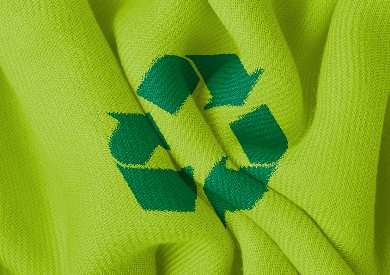FREQUENTLY ASKED QUESTIONS
Textiles have a significant impact on environment during their life cycle. The large amounts of water, energy, pesticides and fertilizers used in the textile industry make it one of the biggest polluters in the industrial sphere.
WHY SHOULD WE RECYCLE TEXTILE WASTE?
The EU textile industry generates around 16 million tonnes of waste a year. A lot of this waste is dumped in landfills or incinerated, at great cost and with serious negative environmental impacts. This also leads to a loss of valuable resources, which can be avoided if waste is recycled.
Most used clothes and textiles can be reused and recycled instead of being burned or landfilled.
Whenever possible, clothing should be reused. There are also different ways of recycling textile waste, in most cases turning them into rags or fibres from which new products can be created.
WHAT ARE THE BENEFITS OF TEXTILE REUSE AND TEXTILE RECYCLING?
• Provides low-cost clothing for low-income households around the world
• Contributes to achieving the legislative targets to increase preparation for reuse and recycling of household waste to at least 55% by weight by 2025.
• Reduces the need for larger landfill spaces
• Reduces pollution caused by incineration of textile waste
• Recycling textile waste saves the environment tonnes of chemicals, waste products and waste water that are used in textile production.
WHAT CAN BE RECYCLED?
All types of clothing and textiles, as long as they are dry, can be reused and recycled.
Even if your textile is dirty, torn, excessively worn or outdated, it can be used in the recycling industry, so don’t throw it away.
Only wet and mouldy textiles or textiles that have been contaminated with hazardous pollutants (e.g. petrol) cannot be recycled.
CAN TEXTILES BE RECYCLED WITH SYNTHETIC FIBRES?
Yes, it can. All tissues can be recycled if they are not contaminated with grease or other hazardous contaminants.
HOW ARE TEXTILES RECYCLED?
Almost all used clothing and textiles can be reused or recycled: most are reused as clothing; others are turned into industrial polishing/wiping cloths or processed into fibres that are incorporated into new products.
The textile reuse and recycling sector includes activities such as collection, processing, distribution of all types of used clothing and textiles.
The process of collecting clothing and textile waste covers all possible sources: households, healthcare institutions, hotels and other businesses that use large quantities of textile products. These include used clothing, cotton, nylon, denim, wool and underwear that have already passed through the consumer market, afterwards are recycled and become a product for the consumer market again.
Another source of textile waste are textile residues or textile by -products, optical and cotton industries. They are used in the automotive, furniture, mattress, coarse yarn, paper, etc. industries.
Recyclers sort and treat used clothing and textiles. At the sites where the collected clothing and textiles are sorted, the items are processed into large bales that are sent for recycling.
Used clothing or textiles can be cut and converted into cleaning rags for industrial, commercial and different end customers. Others are recycled into fibres that are reused to produce clothing, textiles and other products.
WHERE CAN I HAND IN TEXTILES?
• Look for textile collection containers in your city.
• Some clothing stores that take back second-hand clothes.
• Check for companies that collect, accept and recycle textile waste – the EPA website www.eea.government.bg has useful information
• Get involved in textile waste separation initiatives.
INTERESTING FACTS:
• Pollutants found in wastewater generated from cotton washing contain lead, zinc and other heavy metals
• Most wiping and cleaning rags are made from recycled textiles that have been diverted from landfills
• Cotton used to make cloth is the most pesticide-dependent crop in the world.
WHAT CAN/CANNOT I RECYCLE?
Only textile items can be submitted for recycling.
Please do not hand in electronics, mattresses, mixed waste or other non-textile items.

